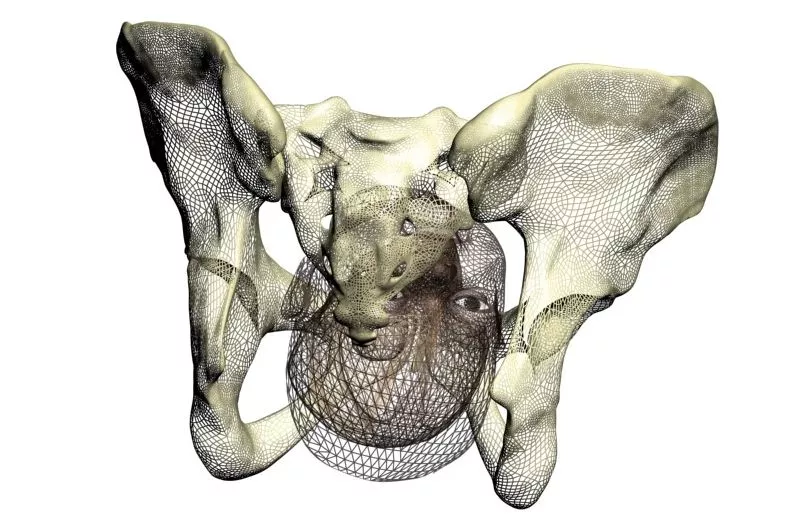In the United States, approximately one-third of all births are performed via cesarean-section. Here's another statistic: emergency C-sections are six to seven times more likely to result in death or harm to the infant, than are planned C-sections. Therefore, if a significant percentage of the emergency cesareans could instead be planned, that would potentially save a lot of babies. That's where PREDIBIRTH comes in. Developed by Dr. Olivier Ami and a team of researchers from France's Université Paris Sud, the software can accurately predict the likelihood of difficult births, based on MRIs of pregnant women's bellies.
The system works by using the supplied images to create a 3D model of the expectant mother's pelvis and the fetus, along with 72 possible trajectories that the baby's head could take when going through the birth canal. Using this model, PREDIBIRTH then digitally simulates the birth process, and determines how likely a normal birth is to occur.
When testing the system, it was supplied with magnetic resonance images from 24 pregnant women, who had given birth since the images were taken. The software rated 13 of the women as highly favorable for a normal birth, and those 13 did in fact not experience any complications. Three others, who were rated as a high risk for dystocia (difficult birth), went with an elective C-section. An additional three, who had emergency cesareans due to obstructed labor, scored a high risk of dystocia. Two other women who also had emergency C-sections, due to heart rhythm abnormalities, scored as mildly favorable and favorable. Finally, three others whose babies required vacuum extraction, were rated as mildly favorable.

Traditionally, the likelihood of dystocia is determined using a process called pelvimetry, which involves measuring the mother's pelvis. Reportedly, the results obtained by PREDIBIRTH are more accurate.
"Our simulation predictions seem to be a significant improvement over pelvimetry," said Dr. Ami. "With this virtual childbirth software, the majority of C-sections could be planned rather than emergency, and difficult instrumental extractions might disappear in the near future."






